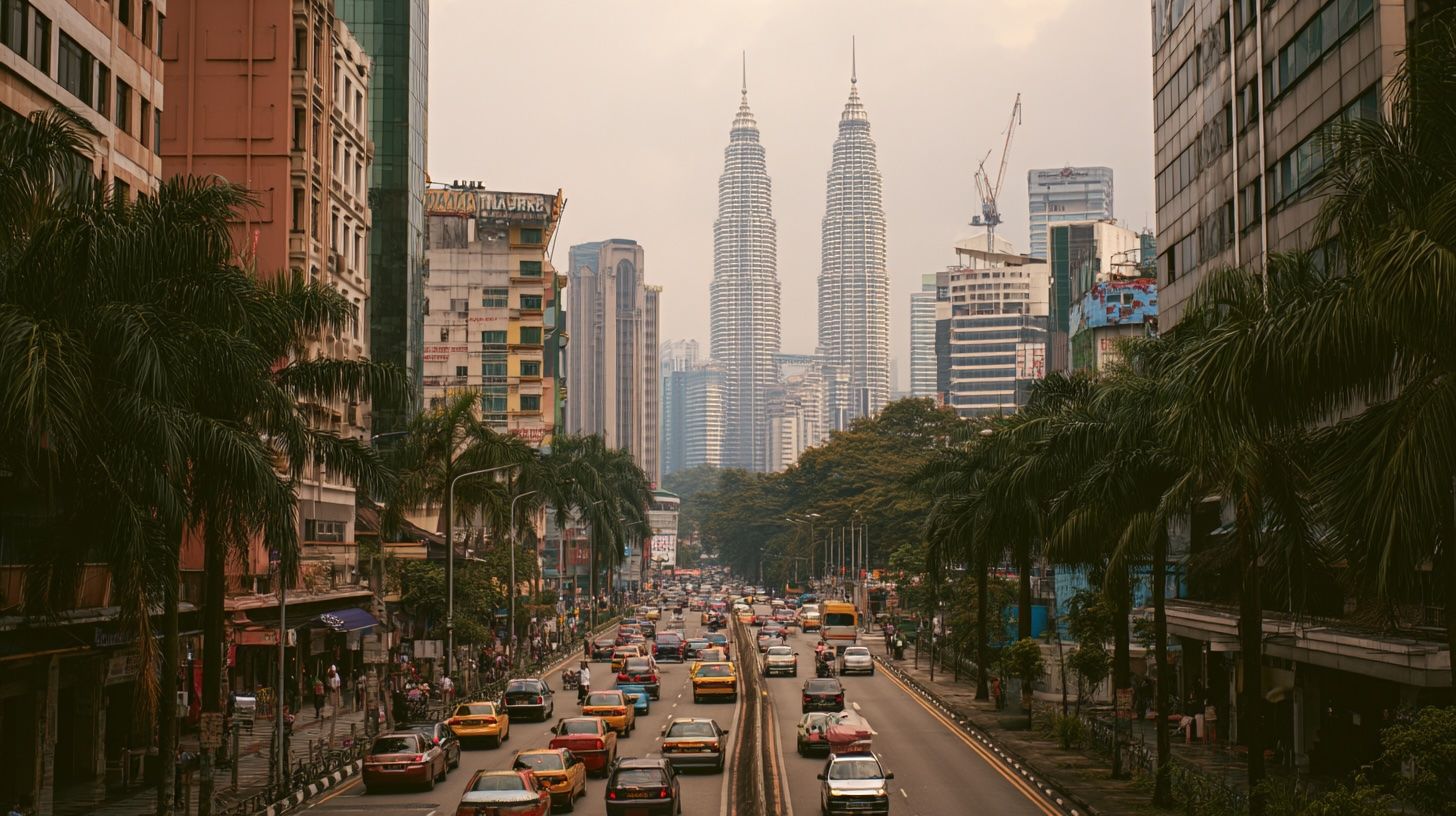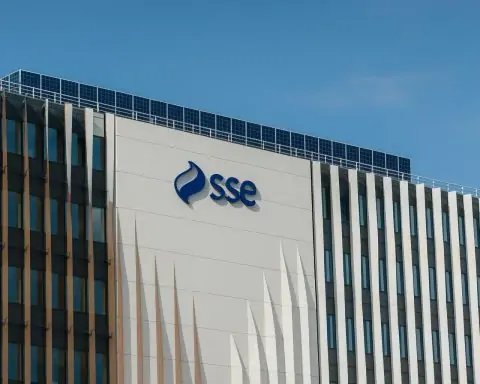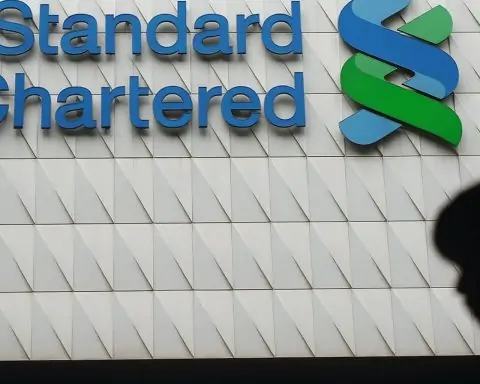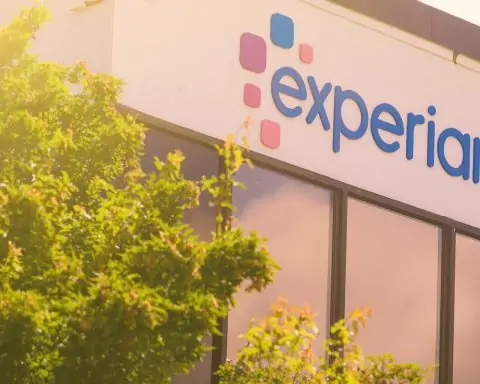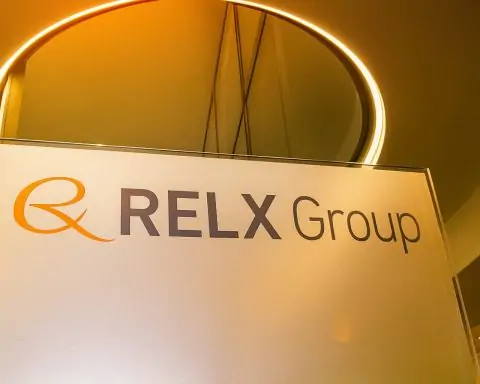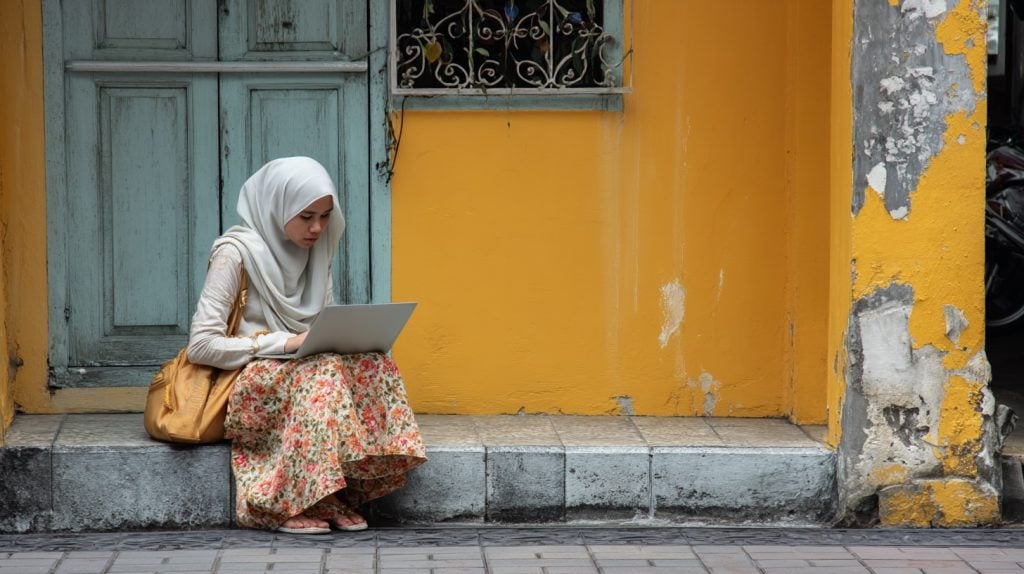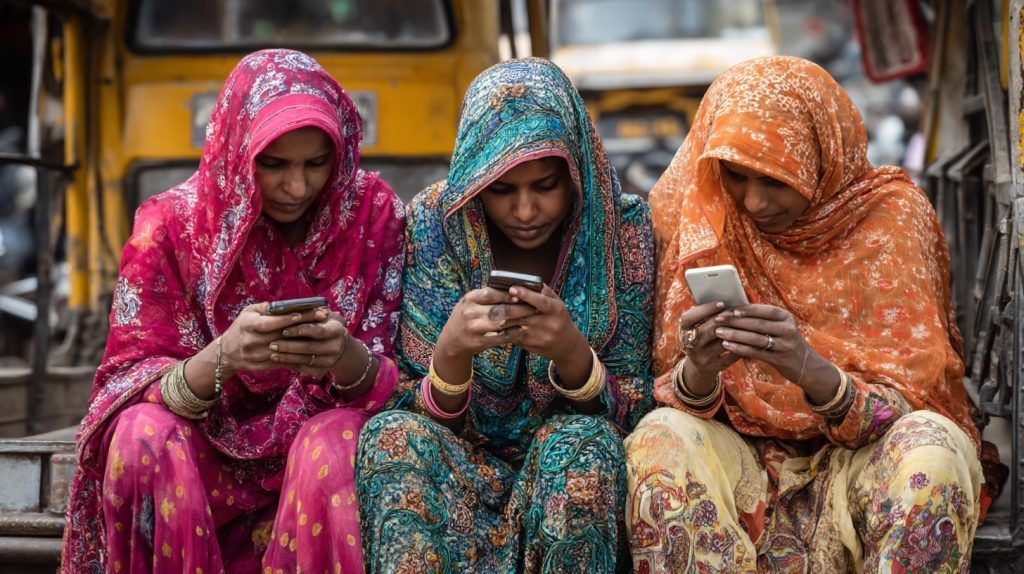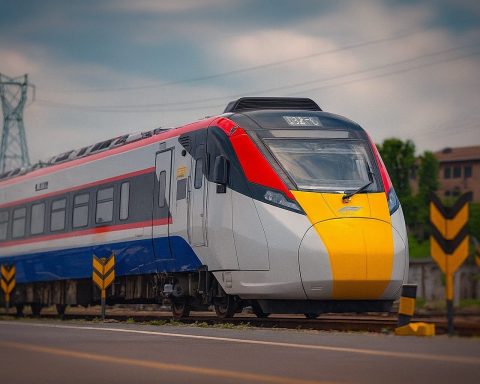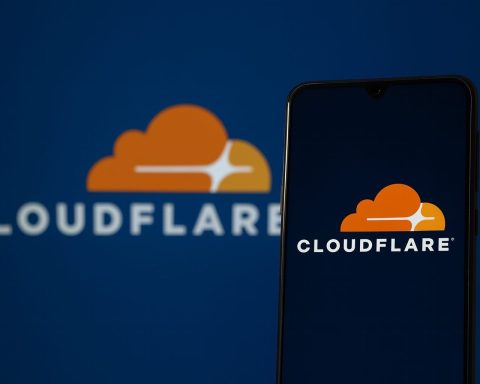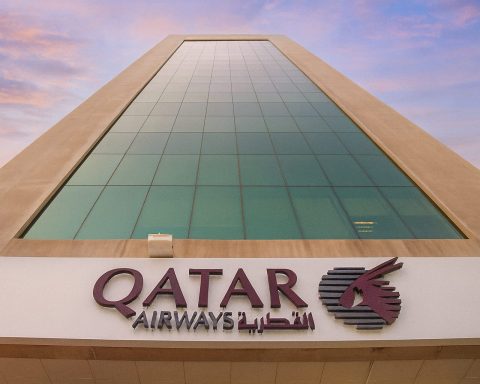- Malaysia’s internet penetration exceeds 97% of the population, with mobile subscriptions around 130%.
- Fiber broadband in Kuala Lumpur is widely available, dominated by Telekom Malaysia’s Unifi, with TIME dotCom, Maxis, and CelcomDigi as major players; TIME offers symmetrical speeds up to 1 Gbps in many high-rise residences.
- By early 2024, about 3.32 million of Malaysia’s 4.19 million premises had been fiberized under the JENDELA program, with Kuala Lumpur a focal point of the upgrades.
- 4G coverage is essentially universal in KL (about 97–98%), while 5G coverage exceeded 80% nationwide by end-2023 and is strong in the city center.
- 5G rollout began in 2021 via Digital Nasional Berhad, and by end-2023 KL had common 5G signals with indoor deployment at airports, hospitals, and convention centers.
- A second 5G network led by U Mobile with Huawei and ZTE aims for 80% population coverage by 2026, potentially expanding competition in KL.
- Public Wi‑Fi is plentiful, with KL Sentral offering free Wi‑Fi and KLIA/KLIA2 providing airport-wide access, plus DBKL hotspots at Merdeka Square.
- Typical fixed broadband speeds in KL start at 100 Mbps (~RM79–RM99/month), 500 Mbps (~RM139–RM159), and 1 Gbps (~RM199–RM249).
- Tourist SIMs include CelcomDigi with 65 GB for about RM40 and Hotlink with 15 GB for RM25.
- Starlink is available in Malaysia at RM220/month with a RM2,300 hardware kit, delivering roughly 50–150 Mbps, but is not cost-effective for urban KL versus ground-based fiber.
Think Kuala Lumpur’s connectivity is all hype? This deep-dive reveals the jaw-dropping truth about 5G, fiber, and Wi-Fi in Malaysia’s capital – including one big surprise for tourists.
Overview of KL’s Internet Infrastructure & Digital Readiness
Kuala Lumpur is at the heart of one of Southeast Asia’s most connected nations. Internet penetration in Malaysia exceeds 97% of the population, with mobile phone subscriptions at roughly 130% [1] – meaning KL’s residents are almost all online (many with multiple devices). The city’s digital infrastructure is highly developed, supported by government initiatives to make Malaysia a regional digital hub [2]. As a result, KL enjoys extensive fiber-optic broadband coverage, widespread 4G LTE, and an accelerating 5G rollout. In fact, Malaysia’s 5G network is rated among the region’s best for consistent speeds, and KL was one of the first cities to benefit [3]. Overall, Kuala Lumpur’s “digital readiness” is very high – from modern network backbone to a tech-savvy population – making connectivity a key strength of the city.
Fiber Broadband Availability and Quality
Fiber-optic broadband is widely available across Kuala Lumpur, delivering high-speed internet to homes, offices, and public facilities. Telekom Malaysia (TM) – via its Unifi service – is the primary fixed broadband provider, with fiber lines passing most urban premises. Other key fiber ISPs include TIME dotCom (TIME), Maxis, and CelcomDigi (which resells fiber access) – giving many KL consumers a choice of providers. Notably, TIME offers service mainly in high-rise condos/apartments, while landed residential neighborhoods often rely on TM’s network [4]. Coverage is excellent in the city center and populated districts – fiber rollout under national programs (like JENDELA) has reached the majority of premises. By early 2024, about 3.32 million out of 4.19 million premises nationwide had been fiberized under these initiatives [5], and Kuala Lumpur as the capital has been a focal point of these upgrades. In practice, most parts of KL enjoy fiber connectivity with speeds up to 1 Gbps or higher, except perhaps a few fringe or older areas still pending upgrades. Overall network reliability is strong – fiber connections in KL typically have low latency (often ~10–20 ms locally) and high uptime, making them suitable for streaming, gaming, and remote work without noticeable issues. Major outages are rare, aside from occasional maintenance or external cable cuts. Urban infrastructure (e.g. underground fiber ducts and robust power grid) further contributes to consistent broadband quality.
Inside Buildings: Many modern condos and office towers in KL come pre-wired with fiber. TIME dotCom’s fiber in particular is known for symmetrical speeds and top performance, but it’s limited to about a few hundred thousand ports concentrated in multi-dwelling units [6]. TM’s Unifi has the widest reach, including suburban houses, though some older Unifi lines may still use VDSL (copper) if fiber hasn’t been extended – this is increasingly uncommon in KL proper. Residents in upscale and central areas (e.g. Bangsar, Mont Kiara, KLCC vicinity) usually have multiple fiber options (TM and TIME, sometimes Maxis or others), whereas a home in a farther suburb might only have TM’s fiber available. Despite these variances, Kuala Lumpur’s fixed broadband quality is generally uniform and very high by regional standards, with gigabit service accessible in most districts.
Mobile Networks: 4G and 5G Coverage in KL
Kuala Lumpur is blanketed by robust mobile network coverage. 4G LTE is essentially universal across the city, with 4G/5G network availability around 97–98% at any given time [7]. The city’s dense cell tower infrastructure means you’ll rarely drop below LTE even when moving about on public transit or indoors in malls. All major mobile operators in Malaysia serve KL, including:
- CelcomDigi – (Celcom and Digi merged) boasting one of the largest combined networks and subscriber bases,
- Maxis – a premium operator known for stability and extensive coverage,
- U Mobile – a value-focused carrier with growing coverage, and
- Unifi Mobile (by TM) and Yes (by YTL) – smaller players with niche offerings (Yes was first with 5G but has a smaller network footprint [8] [9]).
5G in Kuala Lumpur: Malaysia’s 5G deployment started in late 2021 via a single wholesale network (Digital Nasional Berhad, DNB). By end of 2023, 5G covered over 80% of the population nationwide [10], with Kuala Lumpur and the Klang Valley being priority areas. In KL, 5G signals are now common, especially in downtown and high-traffic zones – OpenSignal data shows that 5G users in KL have a 5G connection active over 40% of the time(among the highest usage in Asia) [11]. Average 5G download speeds in Malaysia are around 230–240 Mbps as of early 2025 [12], meaning users in KL with 5G plans regularly see hundreds of Mbps on their phones – a dramatic boost from 4G. 4G speeds in KL typically average ~30–35 Mbps downlink [13], which is still enough for most mobile needs, and 4G performance has improved as traffic shifts to 5G. All the big telcos currently ride on DNB’s 5G network, so coverage is similar between them (focused on KL’s city center, commercial areas, and transit corridors, with coverage expanding to suburbs). Notably, indoor 5G coverage is being enhanced – DNB has been deploying indoor systems at places like airports, hospitals, and convention centers to improve reception inside large buildings [14].
Reliability and Latency: Mobile networks in KL are generally reliable. Call drops and “no signal” zones are rare in the city (perhaps deep underground or in certain building dead spots). Latency on 5G is impressively low – often 20–30 ms, nearing fiber levels, which makes mobile gaming and video calls smooth. Even 4G latency (~30–50 ms) is serviceable for most uses. Network consistency is good but can vary with congestion – during peak hours in dense areas, 4G speeds might dip or latency might spike a bit, but Malaysia still ranks fairly high in mobile network quality indices [15]. In fact, Malaysia remained in the top 10 in Asia-Pacific for mobile experience, although a slight dip in some quality metrics was observed in early 2025 [16]. KL’s telcos are continuously upgrading backhaul and capacity – over 39,000 4G transmitter sites were upgraded under the JENDELA program to boost mobile broadband quality nationwide [17], directly benefiting urban users. With the upcoming dual-5G network model, a second 5G network (to be built by U Mobile with partners) will launch by 2024–2025 [18], which could further improve 5G coverage and competition in KL. In summary, KL’s mobile users enjoy fast and reliable connections in nearly all parts of the city, with cutting-edge 5G technology increasingly at their fingertips.
Key Internet Service Providers (ISPs) in Kuala Lumpur
Staying connected in KL is easy thanks to a variety of ISPs catering to different needs. Here’s a breakdown of the major fixed and mobile providers operating in the city:
- Telekom Malaysia (Unifi) – The former state telecom, TM is the dominant fixed broadband provider. Unifi Home fibre plans cover most addresses in KL, offering speeds from 30 Mbps up to 800 Mbps and 1 Gbps. TM’s infrastructure also underpins many other providers (through wholesale arrangements). TM also offers Unifi Mobilefor cellular service (formerly Webe), though its mobile network is smaller and it often piggybacks on Celcom’s network in practice. TM is known for wide coverage and bundling (TV, phone) rather than the absolute fastest speeds.
- TIME dotCom (TIME) – A home-grown fiber provider that focuses on high-speed fibre in urban condominiums and office buildings. TIME’s plans are famous for symmetrical upload/download speeds (e.g. 100 Mbps up and down) and go up to 1 Gbps or even 2 Gbps for residential users. In KL’s condos with TIME coverage, it’s a popular choice for heavy users due to performance. However, TIME’s footprint is limited to buildings they’ve wired – mostly condos, apartments, and commercial high-rises – so landed houses usually cannot get TIME [19]. TIME consistently ranks at the top for speed and performance metrics among Malaysian ISPs [20] [21].
- Maxis – Primarily known as a mobile operator, Maxis also offers Maxis Fibre home broadband in KL, effectively reselling access (mostly over TM’s fiber network) but with its own packages and customer service. Maxis Fibre plans range from 30 Mbps to 800 Mbps/1 Gbps and are competitively priced (often similar to Unifi). Maxis differentiates with customer service (“Maxperts” installation team) and sometimes better latency optimizations – in fact, Maxis’s network is noted for excellent latency (~20 ms), ideal for gaming [22]. For mobile, Maxis (Hotlink for prepaid) is a top-tier provider in KL, known for strong coverage and fast 4G (and now 5G via DNB). Maxis tends to be slightly pricier on mobile plans, positioning itself as a premium service.
- CelcomDigi – A newly merged entity (Celcom and Digi combined in 2022) and now Malaysia’s largest mobile company. CelcomDigi runs a vast 4G network and offers 5G via DNB, giving excellent coverage in KL and nationally. Their mobile plans, especially prepaid, are quite popular – including tourist SIMs and high-data options (one of which offers 65 GB for ~RM40 with uncapped speeds [23]). On the fixed side, CelcomDigi Fibre is available in KL, essentially leveraging TM’s fiber lines to offer home broadband (with promotions especially if you’re also a CelcomDigi mobile user). Prices and speeds mirror other fiber ISPs (100 Mbps up to 300 or 500 Mbps plans, and 1 Gbps in some areas). For many users, the appeal of CelcomDigi is convergence – e.g. combined mobile + home broadband deals and one bill.
- U Mobile – A smaller mobile operator that has a strong presence in urban areas like KL. U Mobile built a reputation on affordable unlimited data plans. While its 4G coverage is somewhat more limited outside cities, in KL U Mobile has good coverage and now access to 5G. They’ve also recently ventured into home internet via a product called U Home (including 5G wireless broadband and some fiber offerings via partnerships) [24]. U Mobile’s prepaid SIM is a favorite among budget travelers and students (unlimited data for ~RM35, albeit speed-capped at 6 Mbps) [25].
- Yes – Yes 4G/5G (by YTL Communications) is a unique player that launched as a “data-only” 4G network and was the first to offer 5G to the public. Yes’s network is smaller than the big three, but it targets urban centers – Kuala Lumpur has decent Yes coverage, particularly 5G in core areas. Yes offers very competitively priced plans (e.g. RM20 for 50 GB data monthly on prepaid) [26], making it a low-cost alternative if you’re in coverage. However, outside city areas coverage can be spotty, so it’s best for those who primarily stay within KL. Yes does not provide fixed broadband; it’s mobile-only (including some wireless broadband devices).
- Others: There are a few more niche providers. Astro (the satellite TV company) resells broadband (Astro Fibre) in KL, often bundling with TV service – their packages use Maxis or Allo fiber networks. Allo (a Telekom Malaysia subsidiary) is rolling out fiber in some suburbs and adjacent cities, which may extend to some Kuala Lumpur neighborhoods, offering an alternative wholesale network for ISPs. Internet cafes are not common these days (since personal connectivity is so high), but where they exist, they rely on these fixed lines. Overall, the ISP market in KL is competitive – Time leads in pure performance, Unifi in coverage, Maxis in low-latency, and CelcomDigi in mobile-data value, with each pushing the others to improve [27] [28].
Typical Internet Speeds, Performance & Latency by Area
Broadband speeds in Kuala Lumpur are generally very fast. For fixed home broadband, “high speed” in KL means 100 Mbps and above is the norm. In fact, across Malaysia the average tested fixed-line download speed is around 200 Mbps [29], thanks to widespread fiber adoption – and KL users tend to be on the higher end of that spectrum. It’s common for a household in KL to subscribe to 300 Mbps, 500 Mbps or even 1 Gbps plans, especially in condos or new housing areas. Upload speeds on fiber can vary by ISP (Unifi and Maxis offer lower upload than download, e.g. 100 Mbps down / 50 Mbps up, whereas TIME gives symmetrical up/down). Even so, uploads of 50–100+ Mbps are normal, enabling easy cloud backups and HD video calls. Latency on wired broadband is excellent – often 5–10 ms ping to local servers, and ~1 ms on a local network – basically negligible lag for ordinary use. Reliability is high; barring rare outages, users can stream 4K videos, game online, or handle Zoom meetings with no issues. Some differences by district: central business and expat-heavy districts (KLCC, Bukit Bintang, Bangsar, Mont Kiara, etc.) have the best of everything – multiple fiber providers, many public Wi-Fi hotspots, and dense 5G coverage. In these areas, speed tests often show 600 Mbps to 1 Gbps on fiber and 200+ Mbps on 5G mobile, reflecting top-tier infrastructure. In some outer residential areas or older parts of the city, you might only have one fiber option (usually TM Unifi), but even that typically delivers 100–800 Mbps reliably. Virtually all populated neighborhoods in KL have been fiberized by now (as part of national policy to reach 100% populated areas by 2025 [30] [31]). It’s worth noting that within Kuala Lumpur, slow internet usually means you’re on a 4G connection or an outdated DSL line – both scenarios increasingly uncommon. The few remaining copper/ADSL lines (perhaps in some very old apartment blocks) top out around 8–10 Mbps; however, the government’s push (JENDELA) is phasing these out in favor of fiber or wireless. In summary, the speed and quality gap between districts in KL is narrowing – almost everyone in the city can access ultra-fast broadband now, with the main difference being the choice of providers rather than baseline service availability.
On the mobile side, 4G speeds can vary by location and time, but in KL they’re generally good across the board. In crowded downtown areas, you might see 4G speeds of 20–50 Mbps; in less congested spots or off-peak times, 4G can reach 80–100 Mbps on a strong signal. With 5G, many users report speeds exceeding 200–300 Mbps routinely, and sometimes beyond 500 Mbps in ideal conditions (e.g. near a 5G cell and light network load). Latency on 5G (around 25 ms) feels noticeably snappier than 4G (~40 ms) for things like web browsing or online gaming. Different districts have different 5G availability: downtown KL and key commercial hubs have near-continuous 5G coverage, whereas in some residential townships at the city edges, your phone may fall back to 4G more often (5G coverage in Malaysia was ~82% population by end of 2024 [32], so a few gaps remain). Still, even on 4G, basic performance is solid for streaming music, videos, Google Maps, and rideshare apps throughout the city. Call quality is also consistent (VoLTE is widely used). In essence, whether you’re in the heart of KL’s Golden Triangle or a quieter suburb like Setapak or Segambut, you can expect fast and reliable internet – the main difference might be which provider serves you and whether you have 5G yet or are still on 4G in that spot.
Public Wi-Fi and Free Internet Hotspots
Staying online in KL isn’t just about paid services – the city offers plenty of free Wi-Fi opportunities. In fact, local authorities have encouraged this: the Kuala Lumpur and Selangor state governments mandate that many eateries provide free Wi-Fi to customers [33]. This means cafés, restaurants, and even hawker centersoften have a Wi-Fi network open (sometimes you may need to ask staff for the password, typically after buying a drink or meal). Major coffee chains – Starbucks, Coffee Bean & Tea Leaf, PappaRich, Old Town White Coffee, etc. – all are required to offer Wi-Fi and do so as a standard amenity [34]. So, if you pop into an air-conditioned cafe in KL to escape the heat, chances are you can also hop onto their Wi-Fi. The same goes for fast-food outlets like McDonald’s and KFC – free Wi-Fi is available (just look for signs or ask) [35].
Beyond dining spots, public places and transport hubs in KL provide connectivity. Notably, KL Sentral (the main intercity and commuter train station) offers free Wi-Fi for travelers [36]. At the Kuala Lumpur International Airport (KLIA and KLIA2), free Wi-Fi is provided terminal-wide, with easy browser login – handy while you wait for a flight or upon arrival (just connect to “KLIA Free WiFi” and follow the prompts). Tourists will be glad to know you can get online at the airport before even buying a SIM card. Other transportation hubs like major bus terminals also usually have some form of public Wi-Fi.
Shopping malls: Many of KL’s malls have Wi-Fi access either mall-wide or in specific zones. For example, Pavilion Kuala Lumpur mall in Bukit Bintang has a free Wi-Fi service (as do most of the cafes and stores inside) [37]. Suria KLCC (at the Petronas Twin Towers) likewise offers free connectivity around the concourse area. Some malls require a quick registration via email or phone number to use their Wi-Fi, while others might have open networks named after the mall. According to a Wi-Fi hotspot aggregator, in KL you can easily find signals in places like Central Market, Jalan Alor food street, Berjaya Times Square mall, and around Petaling Street (Chinatown) – all popular tourist areas [38]. Even KLCC Park, the green park under the Twin Towers, has free Wi-Fi so you can lounge on the grass and stay connected [39].
The city government (DBKL) has also installed free Wi-Fi hotspots at certain public zones. For example, Merdeka Square (Dataran Merdeka) – the historic plaza – has an official Wi-Fi hotspot covering the square and the adjacent KL City Library [40]. Other DBKL-provided Wi-Fi locations include parts of the Perdana Botanical Gardens and the National Monument (Tugu Negara) area [41]. These initiatives aim to create a digitally inclusive environment, letting residents and tourists get online for free while out and about [42]. The network name might be something like “DBKL WiFi” or “Kuala Lumpur Free WiFi” in those locations. Speeds on public/free Wi-Fi vary – in cafes and malls, you might get a fast 20–50 Mbps if not many users are on it; on busy public networks, it could be just a few Mbps (enough for messaging and emails). It’s always a good idea to use a VPN if doing sensitive work on public Wi-Fi, as these networks are open. But for casual use – checking Google, posting on Instagram, or downloading Grab ride-hailing – KL’s abundance of free Wi-Fi is extremely convenient. You could feasibly spend a day touring the city and hopping between free hotspots to stay connected without a SIM, if you had to.
Internet Options for Tourists: SIMs, eSIMs & Pocket Wi-Fi
Visiting Kuala Lumpur and need internet? Tourists have plenty of affordable options to get online quickly:
Local Prepaid SIM Cards: This is by far the most popular and cost-effective choice. Upon arriving at KLIA airport, you’ll find telco booths for Hotlink (Maxis), CelcomDigi, U Mobile, etc., even before immigration. (Yes – in the arrival hall before passport control, there are SIM kiosks ready to serve travelers [43].) To purchase any Malaysian SIM, you must show your passport for registration (they will scan your ID and even take a fingerprint) [44]. The process only takes a few minutes and you’ll leave with a ready-to-use SIM with a local (+60) number. Tourist SIM packages are very generous in Malaysia: for example, Hotlink (Maxis) offers a Tourist SIM with 15 GB data + unlimited local calls for 30 days at just RM25 (~US$5), or a version with 65 GB + calls for RM39 (~US$8) [45]. CelcomDigi’s tourist SIM is highly recommended – around RM40 (under US$10) for 65 GB of high-speed data valid 30 days [46]. Importantly, CelcomDigi does not cap the speed on this, whereas some others do. U Mobile has a tourist pack with “unlimited” data for ~RM35, but note it’s speed-capped (6 Mbps limit) [47]. Similarly, the Hotlink 65 GB has a speed cap of 12 Mbps [48], which is fine for most uses but not truly 4G/5G full throttle. If you want full-speed, uncapped data, go with CelcomDigi or even Yes: Yes doesn’t market a tourist SIM per se, but their prepaid is 50 GB for just RM20 and reportedly uncapped [49](the trade-off being their coverage is a bit weaker outside city centers). All these SIMs come with local calls and SMS included (though most travelers use WhatsApp/WeChat anyway). Topping up is easy if you stay longer – you can buy reloads at 7-Eleven or via apps.
eSIMs: If your phone supports eSIM, you can skip the physical SIM hassle altogether. Some Malaysian telcos now support eSIM activation (CelcomDigi, Maxis, and Unifi Mobile allow converting to eSIM at their stores or online for postpaid). However, for short-term visitors, the easiest route is using an international eSIM provider. Services like Airalo, SimOptions, or Gigago offer Malaysia data eSIM packages you can buy online before your trip. For instance, SimOptions sells a Malaysia eSIM with 10 GB for around $12.90 [50]. There are also regional eSIMs that cover Malaysia plus neighboring countries if you’re city-hopping. The convenience is you scan a QR code and have data immediately upon landing – no queues, no registration (and as noted, eSIMs don’t require passport registration which some privacy-conscious travelers prefer [51]). The downside is eSIM plans might cost a bit more than local SIM deals (you pay for convenience). But with options as cheap as ~$5 for a few GB [52], eSIMs are increasingly popular. If you want a local telco’s eSIM and you’re staying a while, you can visit a CelcomDigi or Maxis store in KL to get one (they will still require your passport and follow the same registration steps). Overall, for a quick trip, many find grabbing a physical tourist SIM at the airport the best value, while digital nomads or frequent travelers might lean toward eSIM for the flexibility.
Pocket Wi-Fi Rentals: Travelers in groups might consider renting a portable Wi-Fi hotspot (sometimes called “MiFi”). Several companies at KLIA offer this – for example, Klook and TravelRecommends have counters where you can pick up a 4G pocket Wi-Fi device. You usually pay per day of rental. Typical cost is about RM20–40 per day (US$5–9) depending on the provider and data allowance [53]. Some plans cap you at ~1 GB per day full speed (then slow down), others offer “unlimited” 4G. A deposit (around RM100) may be required, refunded when you return the device. These gadgets can connect 5-10 devices at once, so they’re great for a family or group of friends traveling together – far cheaper than each person buying a SIM. The device is battery-powered and usually lasts ~8-10 hours on a charge; you’ll need to carry it with you (fits in a pocket) and recharge at night. Advantages: Everyone in your group gets Wi-Fi, and you can also use it to connect a laptop/tablet, etc. Disadvantages: If the group splits up, only those with the device have internet. Also, if you go out of the city on a day trip, ensure the device’s network has coverage there (most use Maxis or Celcom’s network). Booking in advance online can sometimes get you a slight discount or guarantee availability, especially in peak tourist seasons [54] [55]. Alternatively, some hotels even rent out pocket Wi-Fi to guests. While pocket Wi-Fi is convenient, many tech-savvy travelers find it simpler to just use personal hotspot from a local SIM on one phone. But for convenience of not swapping SIMs (especially if your phone is locked or you want to keep your home SIM active for calls), renting a pocket Wi-Fi is a solid option in KL.
Tethering & Wi-Fi Sharing: Note that all Malaysian SIMs allow tethering (hotspot) at no extra cost, so you can use one phone’s SIM to share internet to others if needed. This is useful if, say, one person buys a big-data SIM and others just connect via that phone’s hotspot.
Internet Cafés and Co-Working Spaces: While public Wi-Fi is everywhere, sometimes you need a proper workspace. Co-working spaces in KL (like Common Ground, WeWork, Regus, and local ones like Dojo or WORQ) offer high-speed internet, comfortable desks and are scattered throughout the city. Many have day passes for tourists or drop-ins. These spaces almost universally have excellent fiber connections (100 Mbps and above) and are a go-to for digital nomads. If you prefer a more casual vibe, “laptop-friendly” cafés abound – in areas like Mont Kiara, Bangsar, and Changkat Bukit Bintang there are cafes explicitly welcoming remote workers (with outlets, Wi-Fi, etc.) [56]. Just buy a coffee and settle in. In short, whether you’re a tourist needing Google Maps on the go, or a remote worker sending big files, KL has an internet solution for you – often at very low cost relative to many other countries.
Pricing Comparison: Broadband vs Mobile Data
One of the great things about internet in Kuala Lumpur is how affordable it is, especially for the speeds on offer. Here’s a quick comparison of typical prices across different service types (in Malaysian Ringgit, MYR):
Home Fibre Broadband (Monthly Plans): Most fixed broadband in KL is unlimited usage (no data caps), so pricing is based on speed tier. Roughly, plans are: 100 Mbps for ~RM80–100/month, 300–500 Mbps for ~RM130–160/month, and Gigabit (1000 Mbps) for RM200–250/month [57] [58] [59]. For example, Unifi’s 300 Mbps plan is often around RM129 on promo, 500 Mbps around RM149 [60] [61]. TIME offers 500 Mbps at RM139 and 1 Gbps at RM199 [62] [63], undercutting TM a bit. Some providers bundle freebies (Wi-Fi 6 routers, mesh units, free months) to add value. The table below highlights a few sample plan prices in 2025:
| Home Broadband Plan (Speed) | Typical Monthly Price (MYR) | Notes (Provider examples) |
|---|---|---|
| 100 Mbps Fibre | RM79 – RM99 [64] [65] | (e.g. U Mobile Home 100 at RM79; Maxis/Astro 100 at RM89; CelcomDigi 100 at ~RM99) |
| 500 Mbps Fibre | ~RM139 – RM159 [66] [67] | (e.g. TIME 500 at RM139; Unifi/Maxis 500 at RM149; CelcomDigi 500 at RM159) |
| 1 Gbps Fibre | RM199 – RM249 [68] [69] | (e.g. TIME 1Gbps RM199; Unifi/Maxis/CelcomDigi 1Gbps ~RM249) |
Pricing notes: Those are standard standalone prices; sometimes you’ll find promotional rates (like TM’s promo 100 Mbps for RM89 [70]) or discounts if you bundle mobile service. Installation and router are usually included for free on a 24-month contract. Compared to many global cities, paying ~$20-50 for hundreds of Mbps is great value. Also, these prices are the same city-wide – unlike rent or real estate, broadband doesn’t cost more in KLCC than in a suburban area; it purely depends on plan and provider.
Mobile Data Plans (Prepaid): Malaysia’s mobile data is famously cheap. For a tourist or prepaid user in KL: RM30–RM50 (≒ $7–$12) can get you a month’s worth of very generous data. Some examples: Maxis/Hotlink 15 GB for RM25 and 65 GB for RM39 [71]; CelcomDigi 65 GB for ~RM40 [72]; U Mobile unlimited data (6 Mbps) for RM35 [73]. Many plans also include unlimited social media or streaming (throttled after a high quota). Yes offers 50 GB for just RM20 [74] as a base prepaid plan – one of the cheapest per GB. If you truly need unlimited high-speed, one option is Digi’s Postpaid (they have an uncapped unlimited plan ~RM Infinite 150) but for short-term use, the high data prepaid packs suffice. To illustrate the value: CelcomDigi’s tourist SIM gives 65 GB for RM40 – that’s less than RM1 per GB, a fraction of what it costs in many Western countries.
Mobile Postpaid: Postpaid plans (if you’re a resident or staying long enough to subscribe) typically range from RM60 to RM150 per month for generous or unlimited data, often bundled with 5G access and other perks (roaming, VIP support, etc.). As a tourist, you likely won’t need postpaid; prepaid is easier and almost as good.
Pocket Wi-Fi Rental: For comparison, renting a pocket Wi-Fi at ~RM30/day for, say, 7 days would cost ~RM210 for a week – which is far higher than just buying a RM40 SIM with heaps of data. Pocket Wi-Fi makes sense only if you have multiple users or absolutely need the convenience of an all-device Wi-Fi. Otherwise, the SIM/eSIM route is more economical for individuals.
Satellite Internet (Starlink): Satellite broadband is a new entrant in Malaysia and is priced differently. Starlink, now available in Malaysia, charges RM220 per month for unlimited usage [75]. However, this excludes the upfront hardware kit cost of about RM2,300 for the basic dish [76]. So initial setup is expensive. The speeds are around 50–150 Mbps down and 5–10 Mbps up in practice [77], which is decent but not beating fiber or 5G for the price. Plus, that RM220 (~$50) per month is steep compared to fiber (which at RM200 gets you gigabit!). Therefore, Starlink and other satellite options are not cost-effective for urban KL users – they’re aimed at rural areas with no fiber/4G. In KL, virtually everyone can get a cheaper, faster ground-based service. A city user might consider Starlink only as a backup for critical connectivity or if located in an odd blind spot for terrestrial networks. For the average consumer or tourist, satellite isn’t really in the mix (and carrying a satellite dish in your luggage is not exactly practical!).
To sum up pricing: Kuala Lumpur offers fantastic bang-for-your-buck for internet. Homeowners pay modest fees for blazing-fast fiber, and mobile data is so cheap that you can be generously connected for the price of a Starbucks latte or two per week. Tourists benefit from the intense competition among telcos – visitor SIM deals in KL are among the best in Asia in terms of data per dollar. And if it’s free you want, the city’s myriad Wi-Fi hotspots have you covered too, at least for light connectivity needs.
Tips for Fast & Reliable Connectivity in KL
Finally, here are some pro tips for both residents and visitors to make the most of Kuala Lumpur’s internet offerings:
For Residents / Long-term Users:
- Choose Fiber When Possible: If you’re settling in KL, definitely get a fiber broadband connection for your home. It’s more reliable and far faster than any wireless option. Check if your condo supports TIME – if yes, their high-speed symmetrical plans are excellent (especially for heavy upload users or gamers who value low ping) [78] [79]. If TIME isn’t available (e.g. you live in a landed house), TM’s Unifi will likely be your go-to, with Maxis or CelcomDigi as alternative providers riding on the same fiber. Don’t worry too much about which reseller – focus on price promos or bundle deals (e.g. if you already have a Maxis mobile, their Home Fibre might give you a rebate).
- Mind the Contract and Promos: Most home broadband plans come with 24-month contracts. Be aware of promo periods (e.g. first 6 months discounted) vs. regular price. Lock in at a good promo if you can. Also, ISP packages can change with government incentives – in 2023 the regulator pushed for cheaper entry-level packages, so make sure you’re on the latest plan (sometimes providers won’t automatically migrate you, but you can request to move to a newer, faster plan at the same price).
- Optimize Your Wi-Fi Setup: KL apartments often have concrete walls that can weaken Wi-Fi signals. Consider a mesh Wi-Fi system (some ISPs include these for higher-tier plans). Also upgrade to a Wi-Fi 6 router (many ISPs now bundle them) for better performance in crowded apartment buildings. Given the high fiber speeds available, a good router is essential to actually enjoy those speeds on wireless devices.
- Mobile Backup: It’s not a bad idea to keep a prepaid SIM as a backup internet source (or use your mobile phone’s hotspot) in case your home fiber has an outage. With unlimited mobile data plans being affordable, some residents even forego fixed broadband altogether and just tether off 4G/5G. This can work if you have a strong 5G signal, but for consistent heavy use, fiber is still king. Nonetheless, if you work from home, having a fully-charged 4G modem or spare phone with data can save the day during an outage or when undersea cable issues slow down fixed internet to overseas sites (an occasional occurrence).
- Explore Provider Perks: Unifi often gives free streaming service trials (like Disney+ or iQiyi), Maxis emphasizes customer service and may give you free upgrades if network improves, CelcomDigi might have discounts if you combine mobile+home. Shop around – KL’s ISP market is competitive and customer retention is important to them, so you might score free speed upgrades or loyalty rewards. Also, keep an eye on community fiber projects if you’re in a suburb; some housing areas band together to get alternative fiber (like Allo or Time).
For Tourists / Short-term Visitors:
- Get a Local SIM at the Airport: It’s the fastest way to get online. The counters at KLIA/KLIA2 have all major telcos – just compare the tourist SIM offers. CelcomDigi’s booth often has one of the best deals (huge data, uncapped speed) [80], but any of the big three (CelcomDigi, Maxis, U Mobile) will serve you well for coverage in KL. The process takes 5–10 minutes. You’ll leave the counter with data working immediately – no need to wait or do any complicated setup.
- Use Ride-Hailing Apps: With data on your phone, leverage KL’s ride-hailing (Grab, for example) instead of hailing taxis – it’s usually cheaper and more reliable. Also use Google Maps or Waze for transit; internet in KL is generally stable enough to navigate in real-time.
- Free Wi-Fi Strategically: While you’ll have mobile data, you can save your quota by tapping into free Wi-Fi when convenient. For instance, at your hotel (most hotels provide free Wi-Fi – from budget guesthouses to 5-star hotels, it’s standard). Also, when visiting attractions like KL Tower or Petronas Towers, use the mall/park Wi-Fi around those areas to upload photos without eating into your SIM’s data. In cafes, definitely enjoy the free internet while resting your feet – just keep an eye on your belongings as in any city.
- Pocket Wi-Fi for Groups: If you’re traveling in a group and everyone needs connectivity (and not everyone’s phone is unlocked for new SIMs), a pocket Wi-Fi rental can be cost-effective. One device can connect up to 5 or more devices [81]. Just remember to charge it nightly and carry it. Pro-tip: You can designate one person’s bag as the “Wi-Fi bag” so it’s always with them when the group splits (no device, no internet!).
- eSIM for Ultimate Convenience: If you don’t want to swap physical SIMs (say you have an eSIM-capable iPhone and want to keep your home number active on the physical SIM), consider purchasing a Malaysia eSIM online before arrival. It can be as easy as scanning a QR code and your data pack activates when you land. Services like Airalo have Malaysia eSIMs starting from a few dollars. It may cost slightly more than the airport SIM, but you’ll be connected the moment you step off the plane. This is great for business travelers who need immediate email access or anyone arriving at odd hours when airport SIM counters might be closed (though in KLIA, they’re usually open for all arriving flights).
- Leverage 5G (if you have a 5G device): All the main telcos offer 5G on their tourist/visitor SIMs at no extra charge. So if you have a 5G-capable phone, you can enjoy those super-fast speeds in KL. This is handy for heavy tasks like downloading offline maps, backing up photos to the cloud, or streaming high-res videos. Just note that 5G will use data faster if you’re not on an unlimited plan – but with 65 GB quotas, it’s unlikely you’ll burn through it unless you’re doing 4K video streaming all day.
- Stay Secure: When using public Wi-Fi (in malls or cafes), avoid accessing sensitive accounts (banking, etc.) unless you have a VPN. While there haven’t been widespread reports of Wi-Fi snooping in KL, it’s a general best practice anywhere. The mobile networks are encrypted and generally more secure for those tasks.
- Know the Emergency Numbers: In case you encounter any issues (lost phone, etc.), note that Malaysia’s emergency number is 999 (or 112 from mobile). And keep your telco’s customer service number or app handy – e.g., CelcomDigi’s app can top-up or extend plans if you need more data, and Maxis/Hotlink has an easy hotline and WhatsApp support.
In essence, Kuala Lumpur is a very connectivity-friendly city – SIMs are cheap, Wi-Fi is abundant, and speeds are impressively fast. Whether you’re a local upgrading your home network or a traveler posting your adventures on the go, you’ll find KL’s internet infrastructure up to the task. Stay connected and enjoy everything the metropolis has to offer!
Recent & Upcoming Upgrades and Regulatory Changes
Kuala Lumpur’s internet landscape continues to evolve rapidly, thanks in part to nationwide initiatives and policy shifts. Here are a few key developments on the horizon (or recently implemented) that affect connectivity in KL:
- JENDELA Program Phase 2: Malaysia’s ambitious JENDELA (National Digital Network) plan is entering its second phase (2023–2025). Under JENDELA, the focus is on 100% 4G coverage, expanding fiber to as many premises as possible, and preparing for wider 5G. As of April 2024, the government reported JENDELA is on track – 2,395 new telecom towers built (of 3,884 planned) and nearly 40,000 cellular sites upgraded [82]. Importantly for KL, fiber rollout is nearly complete in populated zones and the city is benefiting from overall network hardening. By end-2025, JENDELA aims to have virtually every urban (and rural) populated area connected via at least 4G or fiber [83]. For KL residents, this means even fringe neighborhoods or new suburban developments should get fiber access and strong mobile signals, if they don’t already. It also sets the stage for higher baseline mobile speeds – the national target is average 4G/5G mobile broadband speeds of 100 Mbps and gigabit capabilities on fixed lines [84], which KL is largely achieving ahead of time. In short, the city can expect continued improvements in coverage density and network resilience as JENDELA investments continue.
- 5G Dual Network & Expansion: A significant regulatory shift is occurring in how 5G is implemented. Initially, Malaysia’s 5G was a Single Wholesale Network under DNB (meaning all carriers shared one network). In 2023, the government decided to introduce a Second 5G Network run by a consortium led by U Mobile [85]. U Mobile has partnered with Huawei and ZTE to build this network and targets 80% population 5G coverage by 2026 [86]. For Kuala Lumpur, this likely means even more robust 5G availability: two networks could compete on coverage and quality, possibly filling in each other’s weak spots. Also, with the second network, Maxis (which initially held off joining DNB) is expected to come on board – by 2024 Maxis will offer 5G either via DNB or the new network, ending the last carrier holdout. KL users should see 5G signals in virtually all parts of the city as these networks expand. Additionally, 5G cell density will increase (important for high-capacity areas like KLCC during events). The regulatory change also indicates that by late 2024 or 2025, consumers might have a choice of 5G provider, which could lead to differentiated plans (e.g. one network might prioritize ultra-low-latency features or network slicing for certain enterprise or “smart city” applications).
- Public “Smart City” Connectivity: Kuala Lumpur’s city hall (DBKL) has various smart city projects that leverage connectivity. Recently, there’s been talk of expanding free Wi-Fi to more public housing projects (PPR) and busy city streets [87]. In 2022, officials mentioned pilot programs to install Wi-Fi along certain downtown roads for ubiquitous coverage. As 5G rolls out, KL is also poised to implement more smart city solutions – for instance, smart traffic lights, connected CCTV surveillance, and cashless parking systems – all of which rely on stable internet links. Tourists and residents might not directly notice these, but they contribute to smoother city living (e.g. less traffic congestion due to smarter traffic management, enabled by real-time data connectivity between sensors). Moreover, MDEC (Malaysia Digital Economy Corporation) launched a “Digital City” initiativeto drive tech adoption in city services [88]. KL is likely a prime candidate, meaning you may soon see things like city-wide apps that integrate public transport info, free Wi-Fi and 5G small cells in street furniture, or AR navigation guides that all depend on robust networks. These upgrades are subtle but collectively elevate the connectivity experience in the city.
- Regulatory Push for Lower Prices & Better Quality: The Malaysian Communications and Multimedia Commission (MCMC) has been active in ensuring consumers get better deals. In late 2023, for example, they urged telcos to lower entry-level broadband prices and introduce a “Unity Package” fiber plan (30 Mbps for RM69)to make internet affordable to B40 (low-income) groups. While 30 Mbps is not high by urban KL standards, it ensures even budget-conscious users can get a decent fixed line. Likewise, there was a push for telcos to unbundle 5G (so that 5G isn’t only on high-end plans). These regulatory moves mean KL users will likely see more competitive pricing, especially at the lower tiers, and possibly more flexible plans (e.g. shorter contract options, as MCMC discouraged harsh penalties for switching). The merger of Celcom and Digi also came with MCMC mandates to take care of consumers (like not immediately raising prices and expanding coverage in rural areas as a condition). So regulatory oversight in Malaysia tends to favor end-users with better value and coverage, which in KL’s mature market translates to continuous improvement without price hikes.
- Satellite and New Tech: With Starlink’s arrival, the government has also floated ideas like direct satellite-to-phone service in the future [89]. In 2025 or soon after, Malaysia might allow testbeds where smartphones connect straight to satellites when out of cellular range (Starlink has such technology in development). While in a city like KL this isn’t crucial (since cellular is everywhere), it could add resilience for disaster recovery or for fringe areas. Another tech development is the exploration of Wi-Fi 6E and Wi-Fi 7 in public spaces and new devices – as Malaysia updates its regulations to allow the 6 GHz band for Wi-Fi, KL’s dense apartment complexes could benefit from less congested Wi-Fi channels. Expect new routers and devices in KL to start using Wi-Fi 6E, meaning if you’re in a condo, you might soon tap into virtually interference-free Wi-Fi even surrounded by neighbors’ networks. Small improvements like this enhance the user experience in subtle ways.
Overall, Kuala Lumpur’s connectivity is on an upward trajectory – faster, more widespread, and more innovative. The combination of government policy (like JENDELA and digital city plans), competition among providers, and new technologies (5G, satellite, Wi-Fi 6E) means that if you return to KL in a couple of years, you may find even your car or the streetlamps are connected to the internet. For now, KL already offers a stellar internet experience, and the roadmap ahead promises to keep the city on the cutting edge of connectivity in the region.
Sources: Kuala Lumpur’s high internet penetration and 5G leadership [90]; consistent broadband quality driven by competition among TIME, TM, Maxis [91] [92]; Malaysia’s 4G/5G availability ~98% [93] and improving speeds [94]; DNB’s 5G coverage (82% pop.) and indoor expansion [95]; mandate for free Wi-Fi in eateries [96] and ubiquitous café Wi-Fi [97]; common free hotspots in transit and tourist areas [98]; examples of tourist SIM pricing (Maxis, CelcomDigi, U Mobile) [99] [100] and their speed caps or lack thereof [101]; pocket Wi-Fi rental cost range [102]; Starlink availability in MY at RM220/month ~100 Mbps [103] [104]; fiber plan price ranges (100 Mbps ~RM79–99, etc.) [105] [106]; JENDELA progress (fiber to 3.32M premises, tower upgrades) [107] [108]; Malaysia’s move to dual 5G networks and U Mobile’s 5G rollout plans [109]. All these underscore Kuala Lumpur’s status as a well-connected, digitally forward city.
References
1. www.trade.gov, 2. www.trade.gov, 3. www.trade.gov, 4. soyacincau.com, 5. www.telecomreviewasia.com, 6. soyacincau.com, 7. www.malaymail.com, 8. www.traveltomtom.net, 9. www.traveltomtom.net, 10. www.malaymail.com, 11. www.opensignal.com, 12. www.malaymail.com, 13. www.malaymail.com, 14. www.malaymail.com, 15. www.malaymail.com, 16. www.malaymail.com, 17. www.telecomreviewasia.com, 18. www.malaymail.com, 19. soyacincau.com, 20. media.nperf.com, 21. media.nperf.com, 22. media.nperf.com, 23. www.traveltomtom.net, 24. comparefibre.com.my, 25. www.traveltomtom.net, 26. www.traveltomtom.net, 27. media.nperf.com, 28. media.nperf.com, 29. media.nperf.com, 30. www.telecomreviewasia.com, 31. www.telecomreviewasia.com, 32. www.malaymail.com, 33. www.wonderfulmalaysia.com, 34. www.wonderfulmalaysia.com, 35. www.wonderfulmalaysia.com, 36. www.wifimap.io, 37. www.wifimap.io, 38. www.tripadvisor.com, 39. www.wifimap.io, 40. www.dbkl.gov.my, 41. www.dbkl.gov.my, 42. www.ask.com, 43. www.traveltomtom.net, 44. www.traveltomtom.net, 45. www.traveltomtom.net, 46. www.traveltomtom.net, 47. www.traveltomtom.net, 48. www.traveltomtom.net, 49. www.traveltomtom.net, 50. www.traveltomtom.net, 51. www.traveltomtom.net, 52. gigago.com, 53. gigago.com, 54. gigago.com, 55. gigago.com, 56. laptopfriendlycafe.com, 57. comparefibre.com.my, 58. comparefibre.com.my, 59. comparefibre.com.my, 60. comparefibre.com.my, 61. comparefibre.com.my, 62. comparefibre.com.my, 63. comparefibre.com.my, 64. comparefibre.com.my, 65. comparefibre.com.my, 66. comparefibre.com.my, 67. comparefibre.com.my, 68. comparefibre.com.my, 69. comparefibre.com.my, 70. www.facebook.com, 71. www.traveltomtom.net, 72. www.traveltomtom.net, 73. www.traveltomtom.net, 74. www.traveltomtom.net, 75. www.malaymail.com, 76. www.malaymail.com, 77. www.malaymail.com, 78. media.nperf.com, 79. media.nperf.com, 80. www.traveltomtom.net, 81. gigago.com, 82. www.telecomreviewasia.com, 83. www.telecomreviewasia.com, 84. stealthsolutions.com.my, 85. www.malaymail.com, 86. www.malaymail.com, 87. www.thevibes.com, 88. theedgemalaysia.com, 89. www.malaymail.com, 90. www.trade.gov, 91. media.nperf.com, 92. media.nperf.com, 93. www.malaymail.com, 94. www.malaymail.com, 95. www.malaymail.com, 96. www.wonderfulmalaysia.com, 97. www.wonderfulmalaysia.com, 98. www.wifimap.io, 99. www.traveltomtom.net, 100. www.traveltomtom.net, 101. www.traveltomtom.net, 102. gigago.com, 103. www.malaymail.com, 104. www.malaymail.com, 105. comparefibre.com.my, 106. comparefibre.com.my, 107. www.telecomreviewasia.com, 108. www.telecomreviewasia.com, 109. www.malaymail.com
